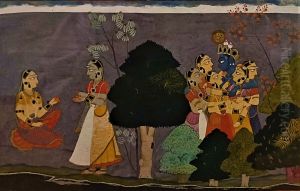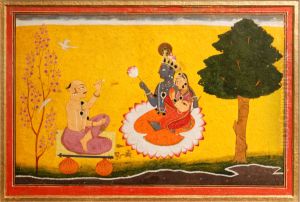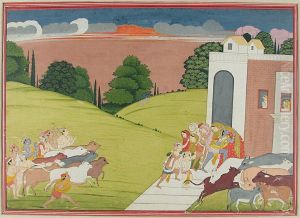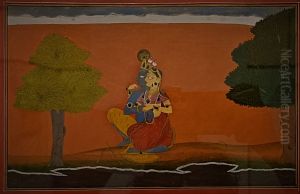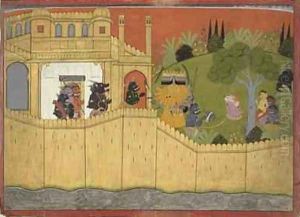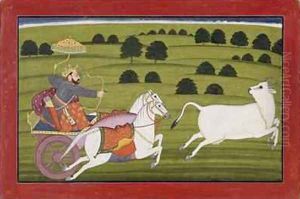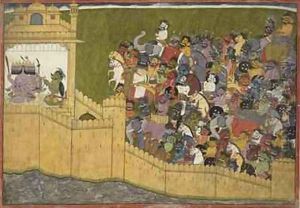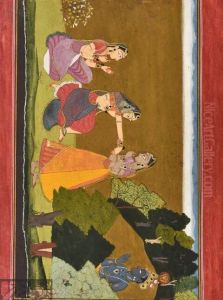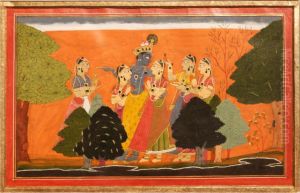Manaku Paintings
Manaku was an Indian painter from Guler, a small hill-state in what is now the Indian state of Himachal Pradesh. He was born around the year 1700 into a family of artists. His father, Pandit Seu, was a notable artist who played a significant role in the development of the early phase of Kangra painting, a style of Indian Pahari painting. Manaku, alongside his younger brother Nainsukh, continued the legacy of their father and became an influential figure in the Pahari painting tradition.
Manaku's work is characterized by its vigorous style and bold use of colors. He often depicted scenes from Hindu mythology, including the epics Ramayana and Mahabharata, as well as various Puranas. His paintings reveal a keen observation of life and a deep understanding of the moods and subtleties of the subjects he portrayed. Manaku's art is also noted for its intricate details and the fluidity of his lines, which bring his figures to life.
Despite the limited number of paintings that can be attributed to him with certainty, Manaku's contribution to Indian art is significant. His works are held in high regard and are considered masterpieces of Pahari painting. Manaku's legacy continued through his descendants, who maintained the tradition of painting in the Guler style. Although the exact year of his death is not known, it is estimated that Manaku died around 1760. His paintings remain a testament to the rich cultural heritage of India and continue to inspire artists and art connoisseurs around the world.
